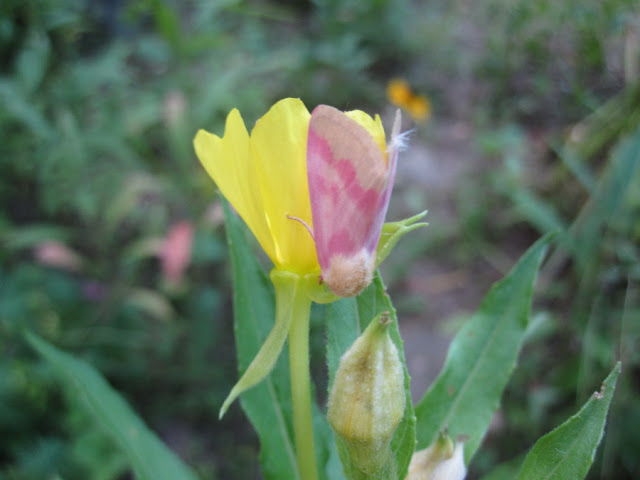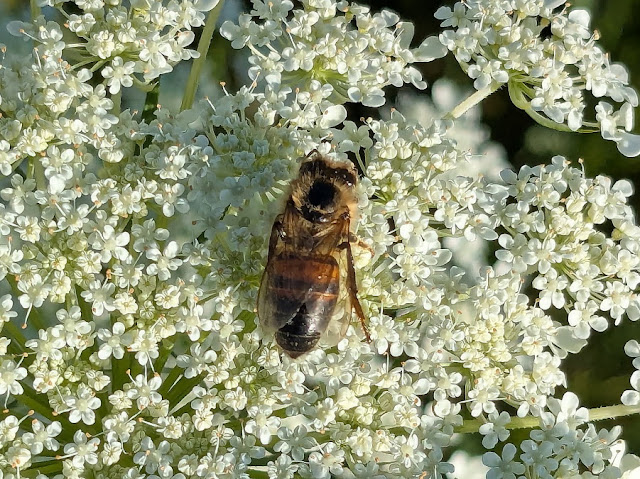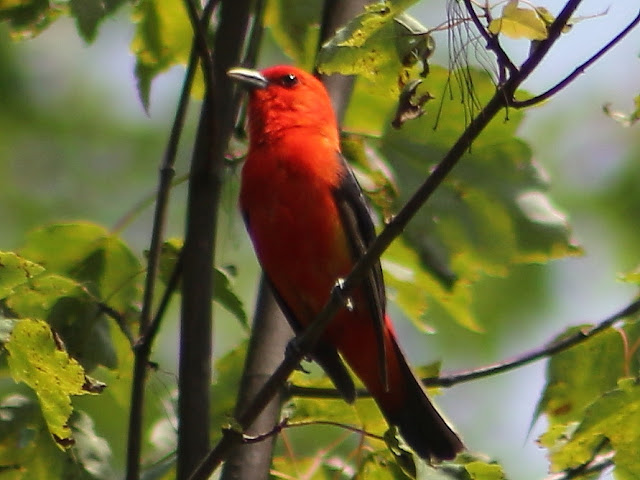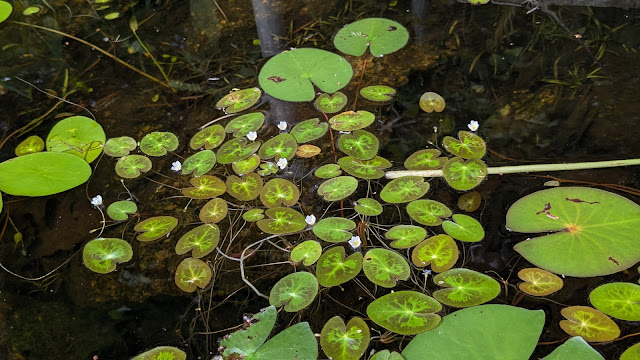There's sad news on the Veery nest, but let's start with something pleasant. Checking the Evening Primrose flowers as promised, I did find a Primrose Moth one morning.
 |
| Primrose Moth (Schinia florida) |
This insect is considered an "obligate species" because it is entirely dependent on one plant, the Evening Primrose. Where there are no evening primrose plants, there are no primrose moths. Adult moths spend their days hidden inside the closed-up blossom. When the sun sets, the blossom open (thus the name "evening primrose") and the moths can move safely under the cover of dark to drink the flowers' nectar using their long proboscis. Eventually they will lay their eggs inside a primrose bud for safe keeping. When the larvae hatch they will feed on the primrose blossoms before burying into the ground to overwinter. In the spring when the earth warms, the caterpillars emerge to feed on the primrose plant and the cycle repeats. Thus the moth's entire life cycle is dependent on this single plant species. [Ref: A Study in Pink and Yellow, Gita Yingling, Sept 2024]
It is a pretty insect.
We had an entertaining few minutes when a Gray Catbird came to our water feature for a bath. It hopped in and out of the water a dozen times, splashing around and diving under to get all its feathers clean. It looked like a wet rag by the time it was done.
 |
| Gray Catbird takes a bath. |
Now the sad news. Last year's veery nest was destroyed by a predator, so this year I used a trail camera to learn who might be the culprit if it happened again; unfortunately, it did: A raccoon took out the veery nest. The 'coon was happily using the trail for easy egress through the forest.
Its sharp nose picked up the scent of the nest.From there it took just a moment for it to zero in on the nest and head straight to it. It was quite tentative as it approached, not sure what it would find. I love the way it held its left front paw up close to its chest, ready to defend against something larger than it hoped to find. Note how close the mother bird let the raccoon get before it flew off. The raccoon sniffed a bit, probed down into the nest, and then proceeded to gobble up the four little chicks. You may want to skip the video if you don't want to see the deed take place.
A veery egg weighs about 2.5 grams; four new born chicks probably weigh about a third of an ounce. That tiny bit of sustenance seems hardly meaningful to a 20 pound raccoon, but animals will take any bit of food they can find. Before the raccoon found the nest, but after the eggs had hatched, the camera took hundreds pictures of mother flying back and forth all day long catching food and bringing it to her chicks. Here are just a few, ending with a close up of her tending to her chicks.
Veeries will occasionally have two broods in a summer, and since the pair won't have to raise this brood, they may try again. Let's hope they find a nesting site farther away from a trail.
On a much happier note, the loon chicks Spangle and Star are doing great. Spangle has even caught her first fish! Star is still a bit smaller, but it looks like he might be catching up. Maybe with Spangle preoccupied with her fishing, Star is getting more fish from mom and dad.
 |
| Spangle and Star with a proud parent. Photo by Deb Crowley. |
To close on another pretty note, if you're out near a field or maybe just a quiet road side, be on the watch for Queen Anne's Lace - it's having a good summer.
 |
| Queen Anne's Lace. |












































